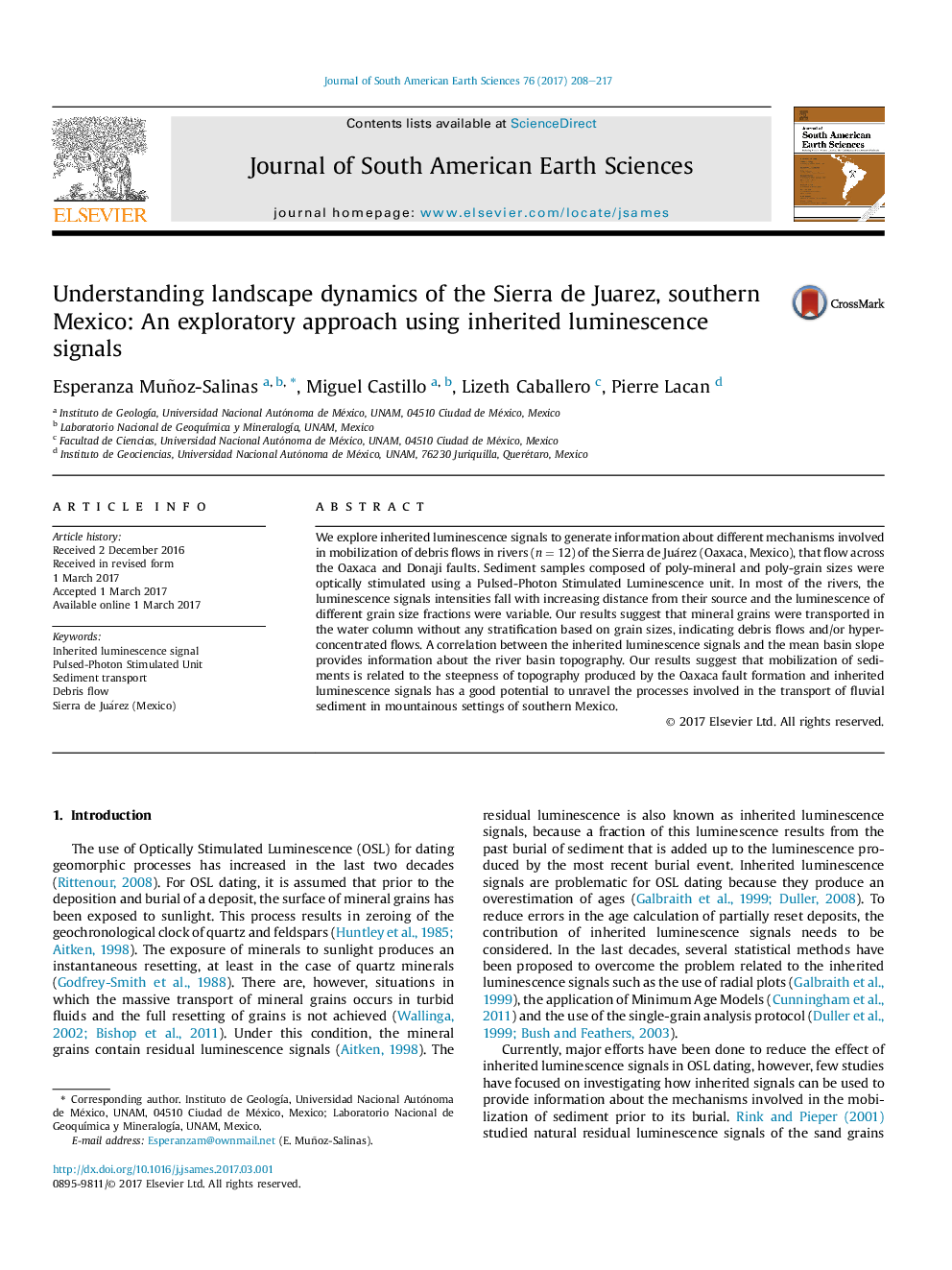| Article ID | Journal | Published Year | Pages | File Type |
|---|---|---|---|---|
| 5780468 | Journal of South American Earth Sciences | 2017 | 10 Pages |
Abstract
We explore inherited luminescence signals to generate information about different mechanisms involved in mobilization of debris flows in rivers (n = 12) of the Sierra de Juárez (Oaxaca, Mexico), that flow across the Oaxaca and Donaji faults. Sediment samples composed of poly-mineral and poly-grain sizes were optically stimulated using a Pulsed-Photon Stimulated Luminescence unit. In most of the rivers, the luminescence signals intensities fall with increasing distance from their source and the luminescence of different grain size fractions were variable. Our results suggest that mineral grains were transported in the water column without any stratification based on grain sizes, indicating debris flows and/or hyper-concentrated flows. A correlation between the inherited luminescence signals and the mean basin slope provides information about the river basin topography. Our results suggest that mobilization of sediments is related to the steepness of topography produced by the Oaxaca fault formation and inherited luminescence signals has a good potential to unravel the processes involved in the transport of fluvial sediment in mountainous settings of southern Mexico.
Keywords
Related Topics
Physical Sciences and Engineering
Earth and Planetary Sciences
Earth and Planetary Sciences (General)
Authors
Esperanza Muñoz-Salinas, Miguel Castillo, Lizeth Caballero, Pierre Lacan,
